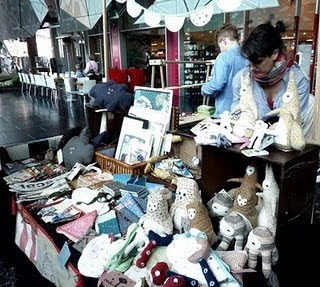



Earlier this year I was traveling through Mexico and Central America looking for the right community to make Ceiba Tree toys, using traditional techniques such as hand weaving and of course tapping into thousand year traditions in natural dyeing still thriving in some places. One such place is Teotitlan del Valle, nestled in between the mountains in Oaxaca, in Southern Mexico. Almost everyone in the town knows about natural dyeing and weaves beautiful woolen rugs by hand from raw wool. Looms can be seen in almost every doorway, and huge skeins of beautifully coloured wool, all dyed with plants hang from walls and ceilings. The towns people are adamant to keep their traditions, speaking their native Mazatec language, refusing the lure of chemical dyes and adopting many environentaly friendly practices such as recycling, saying no to plastic bags and big corporate fast food chains in their community.
Here, in Teotitlan, I undertook a short course in the local natural dyeing practices, also learning about the preparation and spinning of the wool. The dye plants (and insects) used were as follows:
Cochineal - a beetle that lives inside the nopal cactus, that once dried is ground to produce a marrone, red, pink palette
Pomegranate - the dried fruits make a limey yellow growing. towards a black depending on the age of the fruit.
Axiote - a red seed also cooked as food that gives a vibrant orange (with some luck!)
Marigold - The dried flowers can produce pale greeny yellow to a warm light orange.
Huisache - A seed pod from a very spiky tree that grows in abundance in the valley, it makes brown to black, but needs to be fermented to produce the darker hues.
Moss - both moss from the pine trees in the mountains and the soft green moss from rocks can be used the latter making green and the tree moss giving yellow.
Indigo - A magical dyeing plant, which needs to be fermented and ground before dyeing, it reacts with oxygen and turns from pale green to deep blue in seconds after a mere dip in the dye pot
Pecan Leaves - The dried leaves give different shades of warm browns
Pecan nut husks - The husks are fermanted in water for ten days and when added to the dye pot make dark brown to black.
Ya - The Maztec name of a local plant. The twigs are used for making browns with a greeny yellow tone.
Tinta Azul - Another local plant, literally meaning ‘blue ink’, the leaves and flowers are pulverated and fermented for one week, to make light to mid blues
Copalillo - the bark of this huge tree is bright red and gives red tones when collected.
Barba de Lion - Meaning ‘main of the lion’ also known as angel hair, (pelo de angel) this thin yellow vine grows at the top of the trees and gives yellow.













